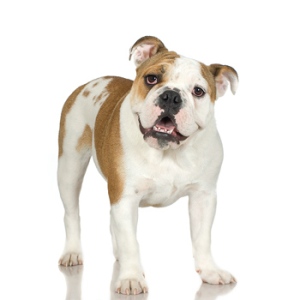Let’s say you have a dog named Fluffy. You’ve had him for three years and invested so much in his happy, wonderful life. You buy the best food and take him with you when you travel to fun and exciting places.
You and Fluffy went to training classes for several weeks when he was younger. He seemed to understand the basics: Sit, Come, Down, Stay, Heel. So, Fluffy is supposed to do what you ask, right? The trainers assured you that dogs are supposed to listen to humans. Every. Time.
But sometimes you ask Fluffy to do something… and Fluffy keeps doing what he’s doing.
And you have so many questions. Is it OK that he doesn’t do what I ask? Am I doing something wrong? Am I not forceful enough (not “alpha” enough)? Does Fluffy need a training refresher course? If I don’t make him do what I ask, doesn’t he “win”? What do I do??
Let me assure you that there are many reasons that Fluffy may not listen to you at any given moment. And you can, by paying attention to what Fluffy is doing when he’s not doing what you asked, figure out the likely reason.
Here are the four primary reasons dogs don’t do what we’ve asked:
- They Don’t Know How. I know Fluffy is a genius and learns so quickly. But sometimes when we teach something new, we need to offer a training grace period before expecting that Fluffy can follow a new cue consistently. This isn’t a training post; so, we won’t go into the most effective way to train a new cue. Just remember that it will take time for Fluffy to get things right reliably.
- They Physically Can’t Right Now. Dogs are not always physically capable of everything we ask of them. Sometimes they’re sore from previous exercise or simply don’t feel well. Sometimes they can do something but don’t think they can and may be reluctant to try. When you ask an older dog to jump up on the sofa, sometimes he can and sometimes he can’t. Or after you’ve taken your pup for a 5-mile run, he may need a pass on jumping into the back of the pickup. This is not truly a case of not listening – but of not feeling able to comply.
- They’re Emotionally Over-Threshold and Can’t Hear You. Dogs get overwhelmed by circumstances the same way people do. Imagine that you’re driving on a busy highway in a heavy rainstorm at dusk and someone in the car asks you for help with an algebra problem. Chances are good that your reaction will be a swift, “Can we PLEASE talk about that later??” Your dog has those moments, too. He’s barking at a terrifying (to him) dog across the street and you’re asking him to sit. If you could read his mind at that moment, he may also be asking, “Can we PLEASE talk about that later??” In short, he can’t do what you ask because he’s busy paying careful attention to whatever stimulus has sent him over threshold. In those moments, be glad Fluffy is on a leash or in the safety of your own home and try to get him away from the stimulus causing so much arousal; you can try to treat the underlying fear later.
- It’s Not Really Worth It. Fluffy is busy doing what Fluffy enjoys (chasing a squirrel, playing at the dog park, eating something delicious he found under a bush during a walk). Then you ask him to do something different (heel, come, drop it).
Here’s where dog owners sometimes struggle: Fluffy has his own motivations and desires. You might well be under the impression that those are less important than yours – and American society, on the whole, would appear to support you in that. But Fluffy doesn’t agree. So, in that moment, your motivations and desires are probably in conflict with his. When this happens, you have three choices:
- You can try standing your ground and somehow compelling Fluffy to do what you’ve asked; this is where punishment would typically be applied. The problem with this approach you still may not actually get Fluffy to listen to you, you will certainly introduce increased tension and possible aggression to the situation, and you may cause Fluffy to become afraid of you.
- You might decide that it’s not really at all important for Fluffy to do what you asked. You don’t really need to leave the dog park right now. Or that burrito he found under the bush looks pretty safe for him to eat.
- You might try to find a way for Fluffy to want to do what you ask. A treat may make leaving the dog park a better idea than staying. Treats might be more fun than chasing a squirrel he’s not going to catch anyway. A high, happy voice may get Fluffy’s attention to make it clear to him that there’s a promise of a treat for following you out of the dog park or away from the squirrel. You can even train a special cue that says “extra-special treat coming!!!” Some people use the cue “cookies” or something else they don’t use at other times.
Which of these you choose may depend on the situation or your relationship with Fluffy. The first option, compulsion, has a lot of possible side effects associated with it (remember the increased tension and possible fear?); so it’s probably not the best strategy.
The second option calls into question whether dogs (and cats and horses, etc.) have agency. In other words, how much should Fluffy’s motivations and wishes be indulged? Generally speaking, if Fluffy is not getting into a dangerous or destructive situation, and his desires are not overly inconvenient for you, he should probably be given a pass on responding to your request. I find myself, after asking my dog to do something – only to discovery that he clearly is not interested, following my request with “…or not…” and laughing. I really don’t mind, as long as it was an offer or suggestion on my part.
The third option is for when the thing you’re asking really does need to happen. For instance, you’re crossing a busy intersection when Fluffly stops to scratch his ear. This is an acceptable thing to do pretty much anyplace else. But not here. So, you use your excited happy voice to call Fluffy to follow you and make it seem like a game. Fluffy decides that a game is better than ear scratching and follows you. Or, maybe Fluffy has just found a sock your son left on the floor and apparently thinks it’s a toy. So, you grab a couple of treats, show them to Fluffy, and toss them several feet away. Fluffy drops the sock to go get the treats and you drop the sock safely in the hamper. In this situation, the problem is easily resolved, and everyone feels pretty happy about the outcome.
Here are three simple messages:
- If your dog isn’t doing what you ask, a little sleuthing should tell you why.
- Assume he has the purest possible reasons for “not listening” and decide whether your request is important enough to overcome them.
- Forcing your dog to do what you want just because you think he should is a recipe for a tense relationship and possible aggression. You’re better off looking at your dog’s motivations as important considerations in your relationship.










